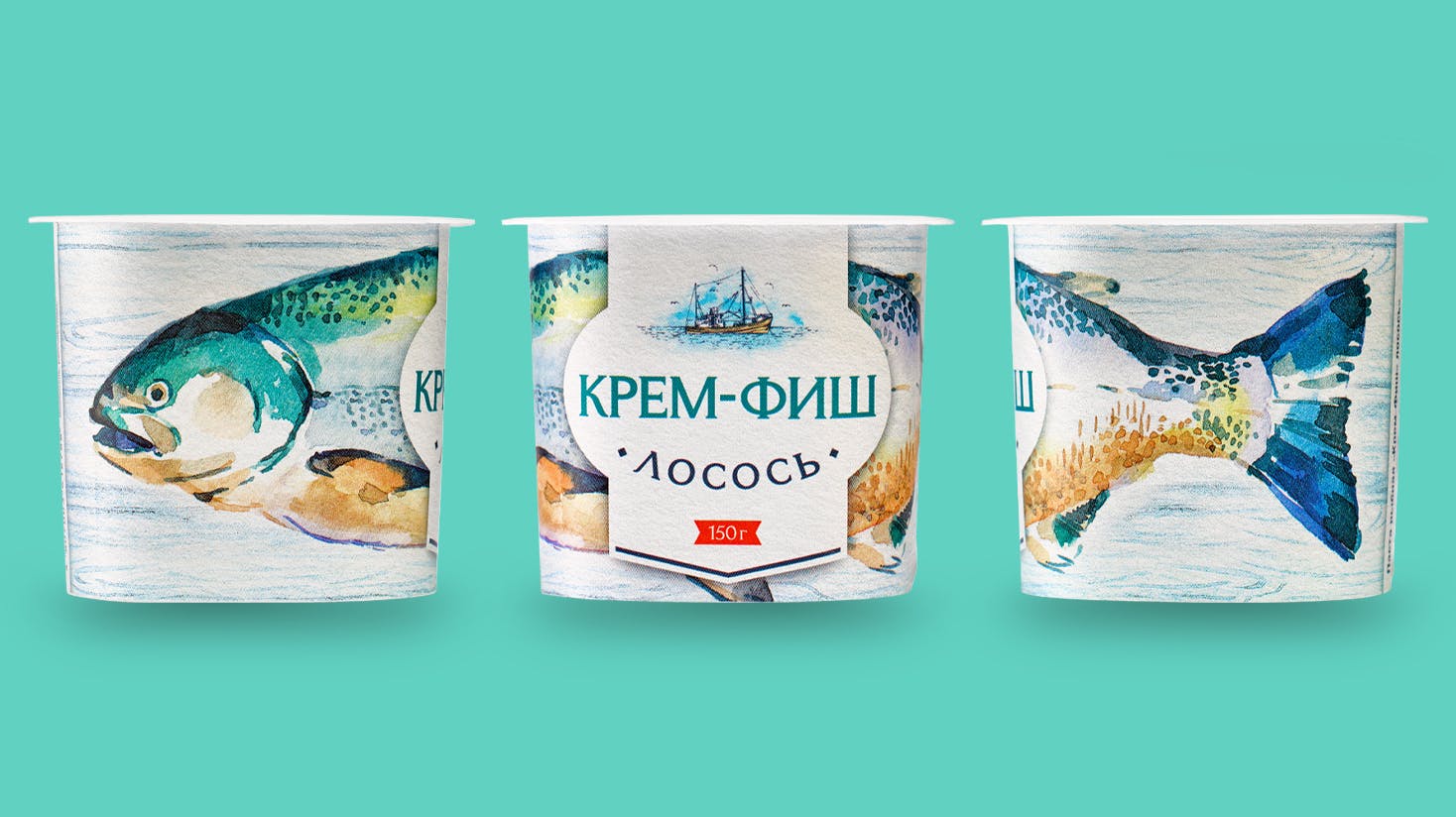Cases
Europrom Cream Fish: an original approach to packaging
Established in 1997, Europrom made its name in Russia with its range of high-quality seafood products. This success led Europrom to expand its market, exporting across the European Union. While most fish-paste products in Russia are sold in glass jars or tin cans, Europrom was determined to use plastic packaging that would help their Cream Fish spreads stand out on the shelf. They contacted MCC Verstraete and Mir Upakovki in search of a suitable solution. The result delivered more than they expected.

Share
The challenge
Yana Petysh, marketing director, Europrom: “We identified three distinct requirements for the packaging we were looking for:1. The IML labels needed to withstand the pasteurization process.2. The top film for the packaging needed to be easy to peel open, while still ensuring long product shelf life.3. The labeling needed to allow attractive, eye-catching decoration.”
Designed to stand the heat
“The high temperatures of the pasteurization process demanded heat-stable IML labels. As the containers for Cream Fish were made from polypropylene, MCC Verstraete responded with an IML label specially designed to withstand the rigors of pasteurization.
Plus, knowing that the packaging and the IML labels are made from the same material, this also means the packaging is 100% recyclable.
Julia Krasnikova, Sourcing & Procurement Director at Mir Upakovki
Easy opening
However, there were issues in finding an optimal combination of packaging and sealing film. This was resolved by working with different suppliers for different parts of the packaging. MCC Verstraete and all the other suppliers communicated clearly to ensure excellent understanding of the requirements and a smooth collaboration. This resulted in the perfect IML packaging.
The right look
This perfection even extended to the look. One of the criteria in finding different suppliers was that the various parts of the packaging would have exactly the same colors to ensure an attractive, uniform look. Mikhail Britcyn, Regional Sales Manager for Russia & CIS and Technical Support Engineer at MCC Verstraete adds: “Of course, in-mold labeling allowed for high-resolution images to be printed on all sides of the packaging, with a single label. As the artwork also needed to withstand the high temperatures of the pasteurization process, we proposed the use of special heat-stable dyes and lacquers that would avoid instability, color fluctuations or bleeding out.”
The added value
“The high-quality printing and original packaging also opened another door. Europrom reflected on how it would be able to encourage consumers to purchase more than one portion of Cream Fish at a time by creating three different but complementary designs on the packaging. By placing two or more different packaging options alongside each other, consumers would be able to create their own story and image of a fish or squid. Fish shelves are usually quite conservative. It is rare to see light water colors and gamification in this sphere. This definitely attracts the potential consumer’s attention. It also offers the store the possibility to create a new, unexpected product display”. says Yana Petysh, marketing director at Europrom.
Success!
New to the Russian market, this approach immediately proved successful. Europrom experienced a sharp increase in sales volume after they released Cream Fish. A year later, the product continues to be extremely popular, a leader in its market segment.